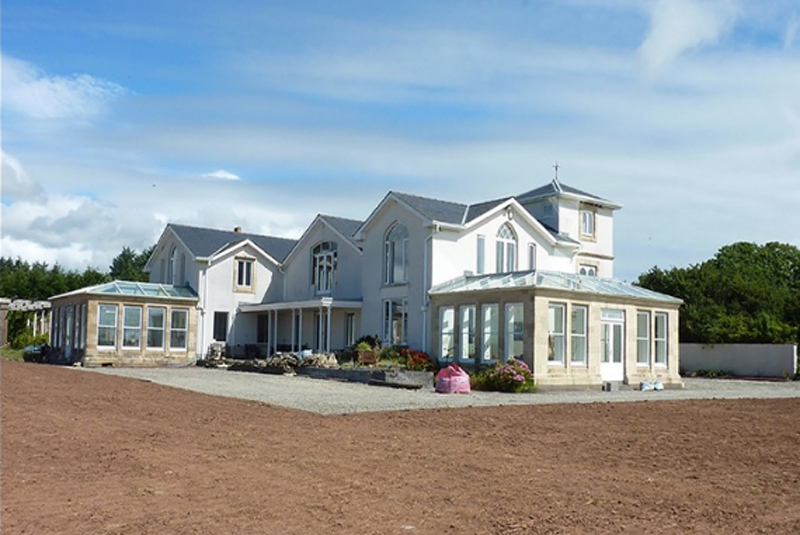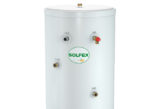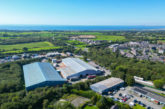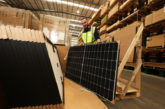
International fashion and textile artists Charles and Patricia Lester have recently demolished an “architecturally disadvantaged” clubhouse into a “palace by the sea”, using renewable technologies including a Kensa ground source heat pump, solar thermal, solar PV, and passive solar generated hot air circulation from conservatories and rainwater harvesting.
When looking to re-design the house themselves, the planning officer was very supportive and not only guided the Lester’s but also made some excellent suggestions. After 10 years, the home they created, which they have named ‘Gwylfan-y-Glaerwen’ (meaning ‘Watching Place of Bright Shining Water’), has a number of unique features including a library and reading room, studio space for the couple to work on their textile business, and a striking tower.
As well as being visually impressive, the house has also been designed to be as energy efficient as possible. Charles was originally a physicist specialising in ultrasonics in relation to textiles. He designed his first solar heating system whilst in his teens 55 years ago. An innovator and inventor, he was keen to use a ground source heat pump to cater for the property’s space heating requirement. In addition to this, Charles has also installed solar thermal panels, solar PV, and passive solar, which pumps hot air from the conservatories into the house in winter. He designed and installed a rainwater harvesting system, and alongside the geothermal technology, this all helps to make the house nearly energy independent.
Kensa specified a 16kW Twin Compact ground source heat pump for the project. Although capable of heating the whole house, the heat pump will rarely be needed to do so, as with support from Kensa, Charles cleverly integrated it with his solar technologies, effectively creating a ‘heat battery’ system that charges the ground with solar energy. He does this by procuring as much heat energy from the solar thermal as possible, which is initially used alongside the solar PV to fulfil his domestic hot water requirement. Any leftover heat is then discharged into the ground via 400m of pipe laid underneath their wildflower meadow. The heat pump then delivers space heating when needed by absorbing the heat stored in the ground via the straight pipe and two boreholes. This design ensures a warmer return temperature to the unit and superior performance, equating to very low heating bills and high returns through the RHI sceme.
The combination of boreholes and straight pipe as a ground array is unusual, but in this case it provided the optimum performance; the use of the ground as a ‘heat battery’ demanded a system design that would ensure all of the discharged heat into the ground was utilised to benefit the heat pump. By using boreholes, which were drilled to depths of 880m, the borehole pipework along with the straight pipework in shallow trenches absorb all possible heat for the heat pump to function more efficiently.
As he did most of the work himself, Charles made use of Kensa’s MCS Umbrella scheme to make sure that the installation was properly accredited and therefore eligible for the Government’s Domestic Renewable Heat Incentive (RHI) scheme. Since installing the renewable heating system, the Lester’s have received very small electricity bills for a property the size of Gwylfan-y-Glaerwen, and a generous sum in return through the RHI.
Charles approached Kensa after some initial research upon a recommendation. He commented: “If I was to offer advice to anyone thinking of installing a ground source heat pump, I would say don’t hesitate! It’s important to get advice from as many people as possible, but definitely talk to Kensa – they are experts and know what they’re doing. I would certainly recommend them.”
Kensa’s resident physicist and General Manager, Dr Matthew Trewhella, provided his analysis of the scheme: “This project is a great example of complementary design. Normally a property of this size would consume very large amounts of energy. Incorporating high insulation, passive solar design and active solar thermal has dramatically reduced the demand for heat. Providing heating and hot water using a ground source heat pump is always a good idea, but the energy reduction improvements mean the heat pump is only used when absolutely necessary.”













